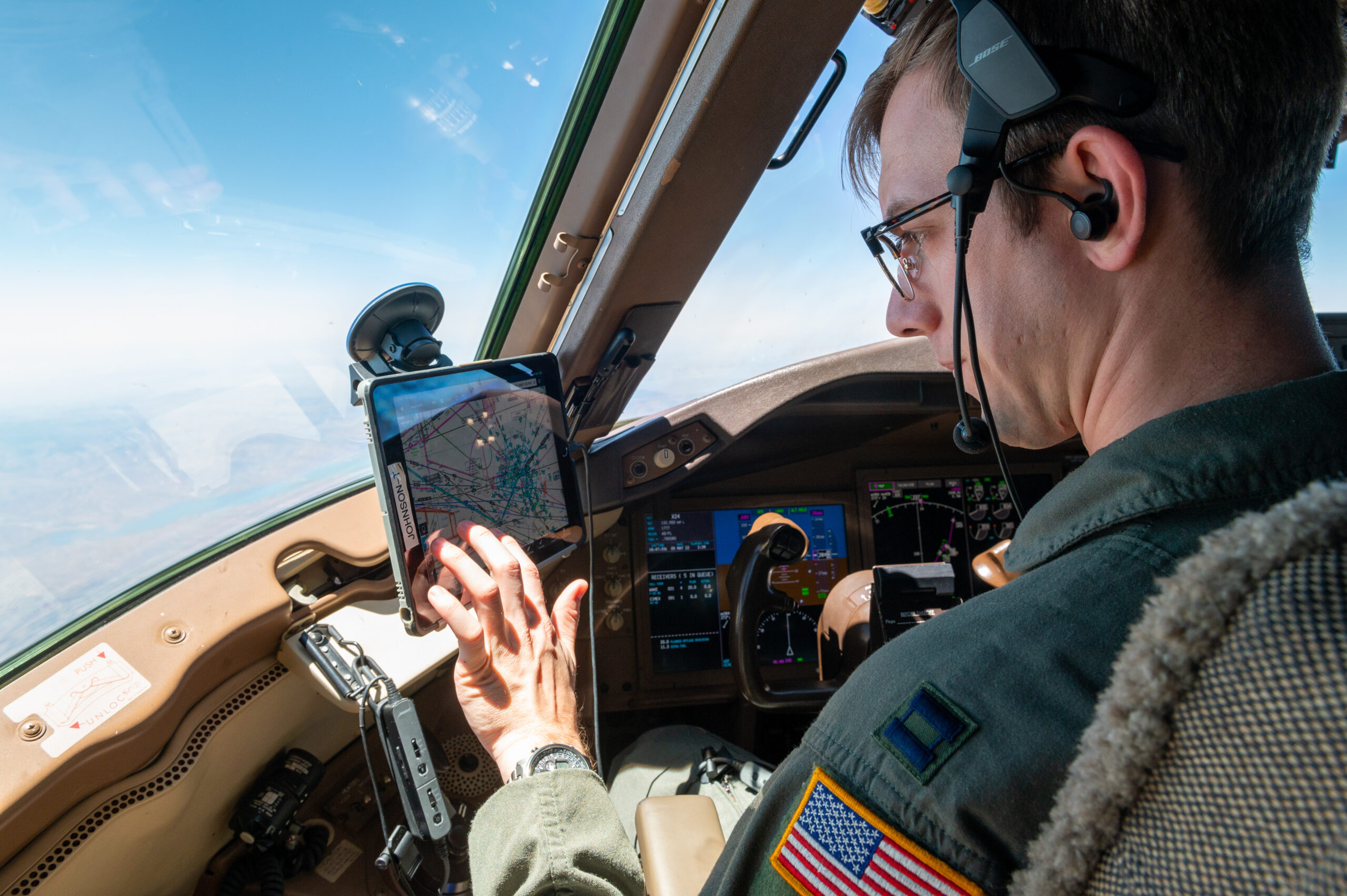The longest flight in the U.S. Air Force’s Air Mobility Command (AMC)’s history has recently been set, clocking in at a staggering 24.2 hours. Aircrew of the 22nd Air Refueling Wing from McConnell Air Base, Kansas, set the record as part of an aerial refueling capabilities test between May 5-6, 2022.
The aircrew — consisting of six pilots, three boom operators, a photojournalist, and a physician assistant — flew aboard a Boeing KC-46A Pegasus tanker.

Boeing’s KC-46 represents, at least in theory, a critical upgrade to the Air Force’s refueling capabilities. At full operational capacity, it is able to refuel “most fixed-wing, receiver-capable aircraft,” according to the Air Force. It can deliver more fuel at all ranges and from shorter runways than the KC-135 aircraft it is replacing. In addition, the tanker takes up less overall ramp space than many competing commercial-derivative tankers, according to Boeing, enabling mission reach at both forward and austere airfields.
The aircraft itself has been in development since February 2011, derived from Boeing’s own 767 commercial aircraft, with its inaugural flight having taken place in December 2014.

Despite these impressive claims, the Air Force has experienced its fair share of problems with KC-46 tankers over the last few years – of which 57 of the planned 179 examples have been delivered as of mid-April 2022, the first of which was received by an operational unit in 2019. KC-46s still have major issues with their remote vision and refueling boom systems. Continued problems with the tankers’ refueling boom post-2019 have also frustrated the service. Fixes that would allow the aircraft to reach its fully promised capabilities are still years away from being deployed.
So, the record-setting flight performed by the AMC in May puts the aircraft in a more positive light.

During the marathon flight, the McConnell KC-46 performed dry contacts with, and was also refueled by, another McConnell KC-46. The KC-46A Pegasus was also able to refuel four Marine F-35s on its over 9,000 mile journey.
Taking off and landing at the McConnell Air Base in Wichita, Kansas, the aircraft was able to navigate much of the U.S. mainland’s western and eastern coastlines, as well as touching its international borders with Canada and Mexico.
In-flight, the Karolinska Sleepiness Scale (a questionnaire that measures fatigue levels) was given to the crew in order to maintain safety standards and operational efficiency. “In flight medicine, our goal is to preserve not only the health and safety of the aircrew but also to preserve the safety of the missions those aircrew perform,” Maj. Cory Henderson, aeromedical physician assistant to the 349th Air Refueling Squadron stated. “For this mission, we’ve tried to do that from the start of planning and now through the execution phase.”

Col. Nate Vogel, 22nd Air Refueling Wing commander, summed up the flight as thus: “This 24-hour sortie is a critical step in the operational evolution of tankers, and the role the KC-46 plays in that…this sortie helps mobility forces identify how best to operate on long-duration sorties from human, to machine, to mission aspects. Long-duration flights are inherently full of risk, and conducting this operation now allows us to identify those risks, and then build and apply mitigations in a more controlled environment. The Joint Force, our allies, and our partners rely on our capability to project combat power globally…we need to be ready to execute anytime, anywhere. This 24-hour sortie is a huge step in realizing that vision.”
Very long duration refueling missions would become critical to any fight in the Pacific Theater, where distances to targets will likely be measured in the multiple thousands of miles. So, working out the kinks now will be essential to operationalize such long-range sorties should a crisis arise. Above all else, the completion of this challenging flight is a rare ray of sunlight for the KC-46A program that has been seen increasingly in a negative light.
Contact the author: oliver@thewarzone.com
